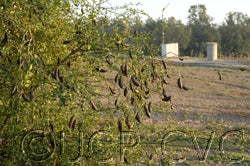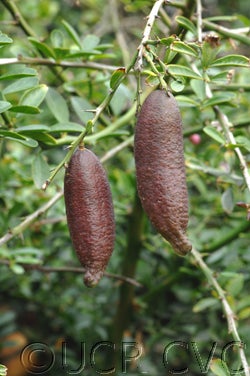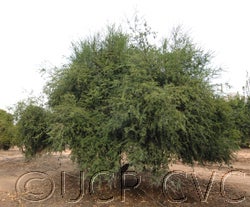Australian finger lime
CRC 1484
PI 539734
Source
Received as budwood from Dr. Joe Furr, USDCS, Indio, CA (from Yuma, Ariz.), 1968.
Parentage/origins
Parent unknown
Rootstocks of accession
Cleopatra mandarin
Season of ripeness at Riverside
Year round; peak fruit production is November to December
Season of flowering at Riverside
February to April
Notes and observations
Original seed collected by W.V. Mangomery, Maryborough, N.S.W., Australia. Purple fruit strain. From North Arin, Murwillunbah, N.S.W. Seed to Furr in 1965.
EMN, 12/22/1987: Nice looking trees so far, little dieback yet. Had light crop, now on ground.--EMN. TCI, Vol. I, pp 353, lists M. australasica var. Sanguinea as the Red-pulp finger-lime and says it varies from pink to red in color. This accession exhibits no pink or red color at all. Pulp is virtually white as it is in all our finger limes in the CRC Nos. 3661 to 3672 group. We probably don't have true M. australasica var. Sanguinea. This accession probably is M. australasica, purple fruit strain- fruit is relatively large for M Australasica and has dark purplish-green rind color. CRC 3661 came in as purple fruit strain but doesn't seem to be- see that card.
Description from The Citrus Industry Vol. 1 (1967)
"This variety differs from the species in that the pulp-vesicles at maturity vary from pink to red in color.
There are similar "pink" or red varieties of oranges (the so-called "blood oranges") and grapefruit, some of which are known to have arisen as budsports. However, the red-pulped variety of the Australian finger-lime is found growing wild and can be propagated from seed; it seems to have originated without the aid of man."
Availability
Not commercially available in California.
USDA Germplasm Resources Information Network page for Microcitrus australasica (CRC 1484)


